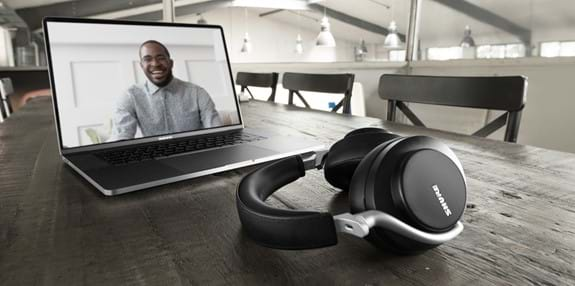Poor Meeting Audio Explained & How To Fix It

What makes conference call audio so bad, and how to fix it? Let’s get the foundations right on why audio sometimes is so poor in virtual meetings and what to do about it, especially when working from home.
COMMON AUDIO ISSUES
Background Noise
Noisy pets, people talking in the next room, busy traffic outside your window… these are pretty obvious causes for distracting background noise. Conferencing software usually offers audio processing that helps to reduce some static noises like HVAC hum but can‘t fix it all, especially when multiple people speak at the same time. Therefore, make sure to remain muted when you‘re not talking.
Far Away Sound
The reason why you may sound distant, tinny or hollow is because your microphone picks up more background noise than voice. Keep in mind: A microphone can only capture sound, it can’t automatically reach out to you or make your voice louder. To increase your “presence”, it’s important that you’re close to the mic to get a stronger, more direct (voice) signal.
- Lean in to speak directly into your laptop mic (maybe not so comfortable
and professional?) or better yet... - Get dedicated audio gear such as an external USB microphone, or ear/headphones with an integrated microphone. They are a lot more directional and can prioritize your voice over ambient sound.
Voice Levels
Naturally, all of us speak in a different manner, some being more soft-spoken while others have booming voices. Professional audio equipment can sometimes be tuned to boost and enhance your speech, however not everyone has this kind of gear. So, two things to keep in mind if you’re a soft talker: Speak up and speak into your microphone, so your voice comes through more clearly.
Echo, Echo, Echo...
An echo is created by other people on the call when they play your voice via their speaker, into their own microphone and send it back to you. When you hear yourself speaking on the other end, ask the people on the call to mute their microphone or put on headphones.
Audio Cuts Out
If you notice that the audio drops out, it’s usually a connection or interference issue.
- Check your Wi-Fi, or better, go with a wired connection from the beginning.
- If you’re using external audio devices, make sure it’s all properly plugged in.
- When using Bluetooth devices, make sure the battery is fully charged. If they come with an audio cable, use that instead to get a wired connection.
More Virtual Meeting Best Practices
Read this related article on how to make the conference call experience better for everyone and ensure your voice counts.

Related Posts
Spotlight On: Audio Equity Empowers Meeting Equity
Meeting equity is the most critical component for successful hybrid meetings. By rethinking and investing in audio you could impact your organization today, tomorrow, and forever.
Spotlight On - Being able to hear and be heard should be non-negotiable
Meeting equity is the most critical component for successful hybrid meetings. By rethinking and investing in audio you could impact your organization today, tomorrow, and forever.